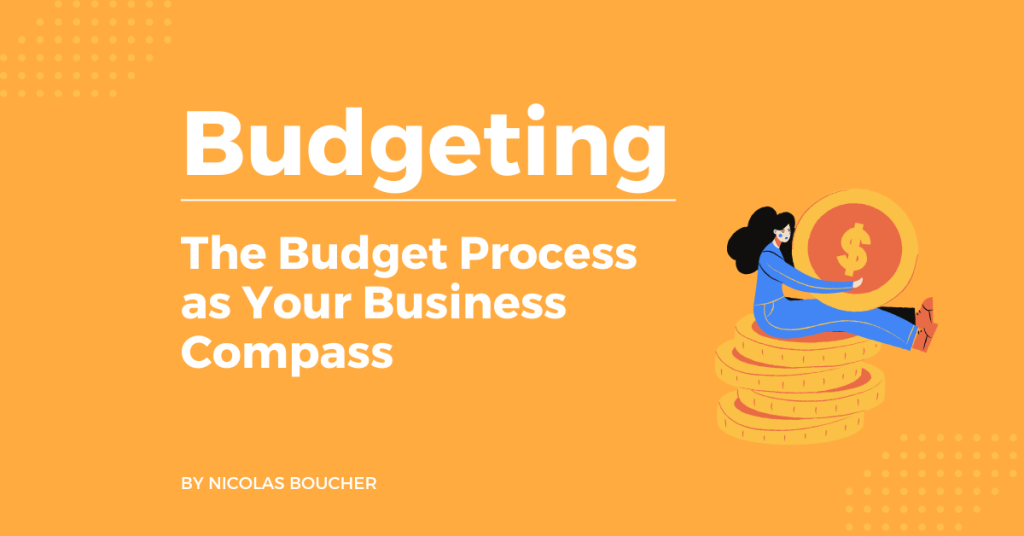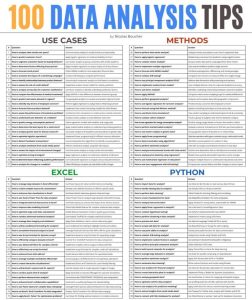Have you ever found yourself lost in a sea of numbers on a complex spreadsheet?
I’ve been there too. But let’s be clear—finance modeling isn’t just Excel.
It’s not just about data crunching; it’s the art of storytelling with numbers, combining logic with intuition.
It’s about understanding the business inside out—its processes, challenges, and opportunities.
Only then do we turn to Excel to weave that story, making calculations that lead to smarter, high-quality decisions.
Mastering this skill is crucial because great finance modeling is the key to predicting your company’s financial health and stability.
Table of Contents
Top 20 Finance Modeling Tips
#1: Start with a Clear Objective

If your model lacks a clear purpose, it’s easy to lose focus, leading to a cluttered and inefficient structure.
For example, imagine you’re building a model to evaluate a new investment.
Without a clear objective, you might include unnecessary details, like projecting the impact of market fluctuations when they’re irrelevant to the decision at hand.
Solution:
Always ask, “What key decision will this model inform?”
This clarity will guide your approach, ensuring that your model remains streamlined and aligned with its intended purpose.
For instance, if the objective is to assess the viability of a new project, your model should focus on cash flow projections, ROI, and risk factors directly related to that project.
#2: Simplify Assumptions
Overcomplicating assumptions can make your model less reliable and more difficult to manage.
Take a budgeting model, for instance.
Instead of projecting each expense category with individual growth rates, consider grouping similar expenses and applying a single, conservative growth rate.
Solution:
Focus on the key assumptions that truly drive outcomes.
Group-related variables and general growth rates should be applied where possible.
For example, rather than separately estimating utilities, office supplies, and travel expenses, you could combine them under “operational expenses” with a single growth assumption.
This not only simplifies the model but also reduces the potential for error.
#3: Avoid Hardcoding
Rigid, hardcoded inputs limit your model’s adaptability to new information or changing conditions, making updates unwieldy and increasing the risk of errors.
If your inputs are static or embedded directly into formulas, you may face significant challenges when market conditions change or when new data becomes available.
Solution:
Always use dynamic inputs by linking to an input sheet where key variables are listed and can be easily modified.
For instance, instead of hardcoding sales projections or other assumptions directly into your formulas, reference these inputs from a dedicated sheet.
This approach ensures that you only need to update one cell when market conditions or assumptions change, and the entire model adjusts accordingly.
This not only keeps your model flexible and accurate but also significantly reduces the risk of errors, saving time and enhancing reliability.
#4: Build Scenarios
Not incorporating different scenarios can leave your model inflexible and unprepared for unexpected changes.
For example, if your model only includes a single set of assumptions, it won’t show how sensitive your results are to variations in key drivers like interest rates or sales volumes.
Solution:
Build multiple scenarios – such as best case, worst case, and base case to understand how different assumptions impact your outputs.
For instance, in a financial forecast, create scenarios where key variables like market growth, pricing, and costs vary.
This will give you a range of possible outcomes and help you prepare for various eventualities.
#5: Design for Clarity

A disorganized model is hard to navigate, understand, and audit, increasing the risk of errors.
If a model is cluttered or poorly labeled, even the most accurate calculations can be lost in translation, leading to misinterpretation or oversight.
Solution:
Design your model with clarity in mind. Clearly label sheets, rows, and columns, and use consistent formatting throughout.
For instance, color-code different types of cells—such as input cells, formula cells, and output cells—to make navigation intuitive.
A clean, well-organized model is easier to review and reduces the likelihood of mistakes.
#6: Validate Assumptions
Unchecked assumptions can lead to inaccurate projections and poor decision-making.
If your model’s assumptions aren’t grounded in reality, the outputs can be misleading, causing stakeholders to make decisions based on faulty data.
Solution:
Regularly validate your assumptions against historical data and industry benchmarks.
For example, if your model assumes a 10% annual revenue growth, check if this aligns with past performance and market trends.
Adjust your assumptions if they deviate significantly from what’s reasonable or realistic.
#7: Incorporate Error Checks
Without built-in error checks, even minor mistakes in your model can lead to significant inaccuracies in your analysis and decision-making.
Overlooking errors in data entry, formulas, or assumptions can result in misleading outputs, undermining the reliability of your entire model.
Solution:
Integrate error checks throughout your model to catch potential issues early.
For example, you can use simple formulas to ensure that totals match across different sections, or create checks that validate data consistency, such as ensuring that assets equal liabilities plus equity in a balance sheet.
Additionally, incorporate flags that alert you to unusual or out-of-range values.
By systematically including these error checks, you can quickly identify and correct mistakes, enhancing the accuracy and credibility of your financial model.
#8: Avoid Complex Formulas
Using overly complex formulas can make your model difficult to understand and prone to errors.
For example, combining multiple calculations into one long, complicated formula becomes challenging to debug and increases the risk of making mistakes.
Solution:
Break down complex calculations into smaller, more manageable steps.
Instead of one large formula, consider using intermediate calculations spread across several cells.
This not only makes your model easier to follow and audit but also simplifies troubleshooting if something goes wrong.
#9: Avoid Circular Referencing

Circular references occur when a formula in a cell refers to itself, either directly or indirectly, creating a loop that can lead to calculation errors, performance issues, and unnecessary complexity.
Common scenarios include calculating interest on debt or modeling interdependent cash flows.
While sometimes necessary, circular references can complicate models and reduce their reliability.
Solution:
Avoid circular references by exploring alternative approaches, such as restructuring your model or using different assumptions.
If unavoidable, enable Excel’s iterative calculation feature, limit its scope, document its purpose, and rigorously test for stability.
Managing circular references carefully ensures model integrity and supports continuous improvement in finance modeling.
#10: Document Assumptions
Without proper documentation, it’s difficult for others to understand your model, which can lead to misinterpretations and errors.
Even if you fully understand your model today, you or someone else might not recall all the details a few months later.
Solution:
Document your assumptions, data sources, and logic clearly within the model.
For instance, add a “Documentation” sheet where you explain each assumption and the rationale behind it.
Alternatively, use cell comments or footnotes within the relevant sections of the model. This transparency makes it easier for others to review and understand your work.
#11: Regularly Audit the Model
If you skip regular audits, errors can accumulate over time, leading to inaccurate outputs and flawed decision-making. Even small mistakes can compound and result in significant discrepancies in your final analysis.
Solution:
Regularly audit your model using Excel’s built-in tools like “Trace Dependents” and “Trace Precedents” to check for errors or broken links.
Set up periodic reviews, especially after significant updates or changes.
Additionally, consider having a colleague review your model to catch any errors you might have missed. This practice ensures that your model remains accurate and reliable over time.
#12: Stress Test Your Model
If your model hasn’t been stress-tested, it may fail under extreme conditions, leading to poor decisions when faced with unexpected scenarios.
For example, a model that only considers average or optimistic outcomes in a downturn might significantly underestimate risks.
Solution:
Push your model to its limits by testing with extreme inputs—such as drastic drops in sales, spikes in costs, or sudden changes in interest rates.
For instance, in a sales forecast, reduce revenue by 50% and see how your bottom line holds up.
This stress testing helps identify potential weaknesses and ensures your model remains reliable in adverse conditions.
#13: Focus on Key Drivers

Including too many minor variables in your model can dilute the impact of the most critical factors, making the model cumbersome and less effective.
If you’re trying to model every possible variable, you might miss the forest for the trees.
Solution:
Identify and focus on the key drivers that have the most significant impact on your outcomes.
For instance, in profitability analysis, concentrate on variables like price, volume, and cost of goods sold, which typically have the largest effect on profits.
Simplifying your model around these key drivers enhances clarity and decision-making.
#14: Make Models User-Friendly
A model that is difficult for others to use often leads to errors and inefficiencies, especially when passed between team members.
If your model is too complex or lacks clear instructions, users may misinterpret the data or struggle to navigate it.
Solution:
Design your model with the end-user in mind. Use clear instructions, intuitive layouts, and simple navigation.
For example, create a “User Guide” sheet within the model that explains how to use it, what each input does, and how to interpret the outputs.
Additionally, lock cells that shouldn’t be modified to prevent accidental changes and use drop-down menus for common inputs to streamline the user experience.
#15: Keep It Scalable
As your business grows, a model that isn’t scalable can become a bottleneck, leading to delays and errors.
If your model is too rigid, it may not accommodate new products, additional markets, or other expansions without significant rework.
Solution:
Build your model in a way that allows for easy expansion.
Consider potential future needs, such as adding new product lines or expanding into different markets, and design your model with these possibilities in mind.
For instance, instead of hardcoding for a fixed number of products, set up your model to dynamically handle any number of products by referencing a data table that can be easily updated.
#16: Incorporate Version Control
Without proper version control, it’s easy to lose track of changes, leading to confusion and potential errors.
Multiple team members working on different versions of the same model can result in conflicting data and significant rework.
Solution:
Implement a version control system where changes are tracked and previous versions are saved.
For instance, save each major update as a new version with a clear naming convention (e.g., “Model_v1.0,” “Model_v2.0”).
Maintain a changelog within the model to document what was updated and why.
This practice ensures that you can always revert to an earlier version if needed and helps maintain clarity in collaborative environments.
#17: Ensure Data Integrity

Using unreliable or inconsistent data can lead to inaccurate outputs, resulting in poor decisions.
If your data isn’t clean and up-to-date, even the best model will produce flawed results.
Solution:
Always verify your data sources and ensure that the data you use is clean, consistent, and current.
For example, if you’re importing data from external systems, use data validation techniques to catch errors or anomalies.
Regularly update your data inputs and review for consistency, particularly when integrating data from multiple sources.
#18: Align with Business Strategy
A model that isn’t aligned with the overall business strategy may provide insights that are irrelevant or even misleading.
For example, if your company is focused on cost leadership but your model emphasizes revenue growth at any cost, the misalignment can lead to poor strategic decisions.
Solution:
Ensure your model reflects the current business strategy and goals.
Regularly review and update your model to stay aligned with any strategic changes.
For instance, if your company shifts focus from growth to profitability, adjust your model to prioritize cost efficiency and margin improvement rather than just top-line revenue growth.
#19: Simplify Outputs
Overloading the model with too many outputs can overwhelm users and obscure the most important insights.
If your model produces dozens of metrics, it can be difficult for stakeholders to identify which ones are most critical.
Solution: Focus on the key metrics that matter most to decision-makers. Present these clearly and concisely.
For example, in a financial performance model, prioritize outputs like EBITDA, cash flow, and ROI, and place them prominently in an executive summary sheet.
Use charts and graphs to visualize data and make it easier to digest, ensuring your insights are accessible and actionable.
#20: Regularly Update the Model
An outdated model may no longer reflect current realities, leading to incorrect conclusions and poor decision-making.
If your model isn’t regularly updated with new data and assumptions, its relevance quickly diminishes.
Solution:
Regularly update your model with the latest data and assumptions.
Set a schedule for reviews – quarterly, monthly, or even weekly, depending on the volatility of your environment.
For example, if you’re modeling market trends, ensure that your model incorporates the latest economic indicators and industry reports.
Staying current keeps your model accurate and useful.
Final Words
A good financial model is clear, focused, and easy to use.
It should directly support decision-making by keeping assumptions simple, avoiding complex formulas, and regularly checking for errors.
Regular updates and clear documentation make sure your model stays useful and accurate.
Following these tips will help you build reliable models that provide the insights you need without unnecessary complications.
Keep your model aligned with your business needs, and always focus on the key drivers that matter most.
FAQ
Q: Why is it important to start a financial model with a clear objective?
A: Starting with a clear objective helps guide the structure and focus of your model. Without a defined purpose, you risk including unnecessary details, which can clutter the model and make it less effective. A clear objective ensures that the model remains streamlined and aligned with the key decisions it aims to inform.
Q: How can I avoid overcomplicating assumptions in my financial model?
A: To avoid overcomplicating assumptions, focus on the key drivers that significantly impact the outcomes. Group similar expenses and apply general growth rates where possible, rather than projecting each category individually. Simplifying assumptions not only makes the model more manageable but also reduces the potential for errors.
Q: What are the benefits of incorporating error checks in financial models?
A: Error checks help identify mistakes early, ensuring the accuracy and reliability of your model. They can catch inconsistencies, validate data, and flag unusual values. By integrating these checks, you can quickly correct errors, which enhances the model’s credibility and prevents poor decision-making based on faulty outputs.
Q: How does building scenarios improve finance modeling?
A: Building scenarios allows you to test how different assumptions impact your model’s outputs. By creating best-case, worst-case, and base-case scenarios, you gain a comprehensive view of potential outcomes. This approach helps you prepare for various situations, providing a more flexible and resilient decision-making tool.
Q: Why should financial models be user-friendly, and how can this be achieved?
A: User-friendly models are easier to navigate, understand, and use correctly, reducing the risk of errors. You can achieve this by using clear instructions, intuitive layouts, and consistent formatting. Adding guides and comments, as well as protecting cells that shouldn’t be modified, also helps ensure that the model is accessible and minimizes user mistakes.















